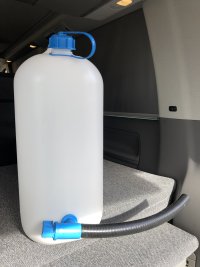18ME
VIP Member
With all the stories of hose pipes not suitable and non food safe, although I don’t know much about this and I know you can buy food safe hoses but then wouldn’t I need to connect this from the kitchen tap? Again I’m not 100% sure about this but isn’t the kitchen tap the only true drinking water tap and not the outside or garage tap?Can understand the desire to go small. But my point is:
- at home: you can use a hose directly from your tap. So no need for this attachment.
- while away: what does this thing do better then just using a 1.5L water bottle? You'll need a water container either way.
I personally never drink water from the tap at home anyway as our water is hard so always drink bottled water and filter the kitchen tap water for tea and coffee.
I just like the idea of the Cali always having drinking water run through it in case we ever wanted to drink it and for making hot drinks.
















